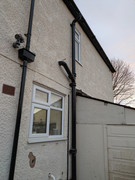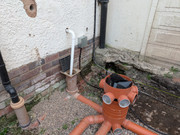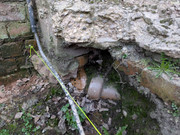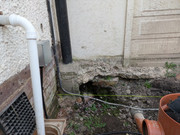Joyous. I've got an otherwise perfectly fine cast iron stack on my 1930's house, but while excavating for my new patio project I've discovered it's leaking (badly) around the clay connections. To add further complexity, most of this is under a garage / concrete slab (I'll get a photo and you'll see what I mean).
I'm actually more comfortable with the underground portion than I am the cast, as I've done a bit of underground drainage now! I'm fairly happy exposing the clay, and I know it'll connect up to the main clay run.
My questions are:
1. Is this the time to just accept it and replace the whole stack?
or
2. Is it possible to replace the clay portions with plastic and still get a good termination?
And, I assume the concrete block at the bottom is structural?
I'm actually more comfortable with the underground portion than I am the cast, as I've done a bit of underground drainage now! I'm fairly happy exposing the clay, and I know it'll connect up to the main clay run.
My questions are:
1. Is this the time to just accept it and replace the whole stack?
or
2. Is it possible to replace the clay portions with plastic and still get a good termination?
And, I assume the concrete block at the bottom is structural?





